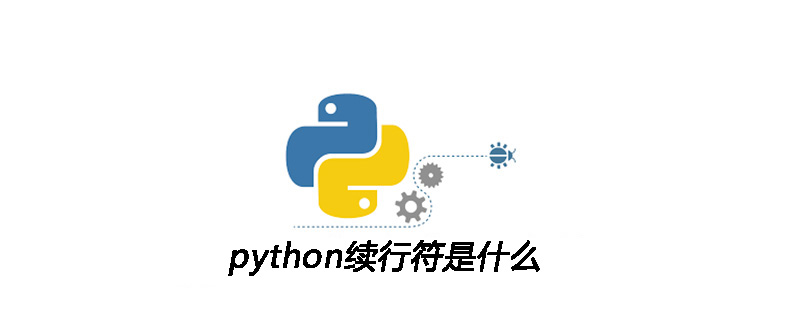ホームページ >バックエンド開発 >Python チュートリアル >Pythonの行継続文字とは何ですか?
Pythonの行継続文字とは何ですか?
- 爱喝马黛茶的安东尼オリジナル
- 2019-06-20 16:30:0550278ブラウズ
またがるリテラル文字列は次の方法で表現できます。行継続文字を使用します。つまり、各行の最後の文字の後にバックスラッシュを使用して、次の行が前の行の論理的な継続であることを示します。
次の例では \n を使用して新しい行を追加しています:

>>> '"Isn\'t," she said.' '"Isn\'t," she said.' >>> print('"Isn\'t," she said.') "Isn't," she said. >>> s = 'First line.\nSecond line.' # \n 意味着新行 >>> s # 不使用 print(), \n 包含在输出中 'First line.\nSecond line.' >>> print(s) # 使用 print(), \n 输出一个新行 First line. Second line.
次の例ではバックスラッシュ (\) を使用して行を続けています:
hello = "This is a rather long string containing\n\
several lines of text just as you would do in C.\n\
Note that whitespace at the beginning of the line is\
significant."
print(hello) 関連する推奨事項: "Python ビデオ チュートリアル "
改行文字は、バックスラッシュが破棄された後の改行文字である \n で表す必要があることに注意してください。上記の例では、次のように出力されます:
This is a rather long string containing
several lines of text just as you would do in C.
Note that whitespace at the beginning of the line is significant.または、文字列を """ (3 つの二重引用符) または ''' (3 つの一重引用符) で囲むこともできます。三重引用符を使用する場合、改行文字は次のようになります。エスケープは必要ありません。文字列に含まれます。次の例では、エスケープ文字を使用して、先頭の不要な空白行を回避します。
print("""\
Usage: thingy [OPTIONS]
-h Display this usage message
-H hostname Hostname to connect to
""")出力は次のとおりです:
Usage: thingy [OPTIONS]
-h Display this usage message
-H hostname Hostname to connect toIf 「生の」文字列を使用すると、\n は改行に変換されず、行末のバックスラッシュとソース コードの改行文字がデータとして文字列に含まれます。例:
hello = r"This is a rather long string containing\n\ several lines of text much as you would do in C." print(hello)
出力:
This is a rather long string containing\n\ several lines of text much as you would do in C.
以上がPythonの行継続文字とは何ですか?の詳細内容です。詳細については、PHP 中国語 Web サイトの他の関連記事を参照してください。
声明:
この記事の内容はネチズンが自主的に寄稿したものであり、著作権は原著者に帰属します。このサイトは、それに相当する法的責任を負いません。盗作または侵害の疑いのあるコンテンツを見つけた場合は、admin@php.cn までご連絡ください。

